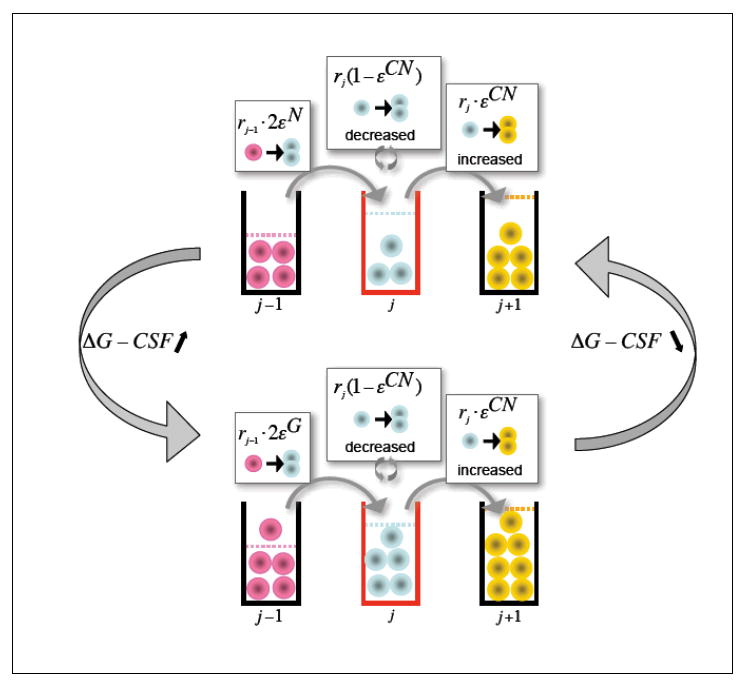Figure 3.

Schematic representation of the mechanism of cyclic neutropenia. Myeloid precursors that express mutated ELA2 have a higher ε (εCN>ε, upper panel); their self-renewal capability is therefore reduced and the downstream compartments have less cells due to decreased net output from the compartment where the defect is phenotypically present. The lower neutrophil count increases the G-CSF level. The organism responds to this increase of G-CSF by reducing ε in progenitor cells (εG<ε lower panel). The downstream compartments are replenished and neutrophil output increases. This higher neutrophil count will decrease the levels of G-CSF; progenitor cell self-renewal decreases and the cycle repeats itself. Therapy with G-CSF ensures that neutrophil counts do not fall under a critical level.
